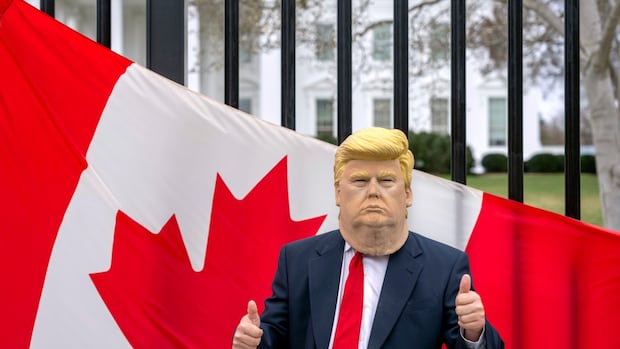Three Ways the Canada-US Feud Will End: A Deep Dive into Potential Resolutions
Editor’s Note: Tensions between Canada and the United States are running high. This article explores three potential pathways to resolving the current disputes.
Why This Matters: The Canada-US Relationship in Crisis
The Canada-US relationship, historically one of close cooperation and mutual benefit, is facing unprecedented challenges. Disagreements on trade, environmental policies, and even cultural issues are straining the ties between the two North American neighbors. Understanding the potential resolutions is crucial not only for Canadians and Americans but also for the global economy, given the intertwined nature of both nations' economies and influence. This article will explore three potential scenarios for resolving these disputes, analyzing their likelihood and implications. We’ll delve into the key players, the underlying issues, and the potential outcomes for each scenario.
Key Takeaways
| Potential Resolution Scenario | Likelihood | Benefits | Drawbacks |
|---|---|---|---|
| Negotiation & Compromise | High | Peaceful resolution, strengthens bilateral ties | May lead to unsatisfactory concessions from both sides |
| Arbitration & International Mediation | Medium | Impartial decision, avoids further escalation | Can be time-consuming and expensive; potential for dissatisfaction |
| Escalation & Retaliation | Low | May force concessions from one side | Significant damage to bilateral relations, economic disruption, potential for wider conflict |
Three Ways the Canada-US Feud Will End
Scenario 1: Negotiation & Compromise
Introduction: The most likely scenario involves a series of bilateral negotiations, potentially involving high-level officials from both governments. This approach relies on finding common ground and making mutually acceptable concessions.
Key Aspects: This scenario hinges on effective diplomacy, a willingness to compromise from both sides, and a focus on shared interests. Successful negotiations require clear communication, transparency, and a recognition of the other party’s legitimate concerns.
Detailed Analysis: Past instances of successful Canada-US negotiations, such as the resolution of previous trade disputes, offer valuable lessons. Examining these past successes can highlight effective strategies and potential pitfalls. This approach prioritizes maintaining a strong, albeit potentially strained, relationship. The success relies heavily on political will and the ability of both leaders to navigate domestic pressures.
Scenario 2: Arbitration & International Mediation
Introduction: If bilateral negotiations fail to produce a satisfactory outcome, both countries might resort to arbitration or seek mediation from a neutral third party.
Facets: This involves presenting the disputes to an independent body (arbitrator or mediator) for review and a binding or non-binding decision. The roles of international organizations like the WTO could be significant here. Examples of successful international mediation in similar disputes can inform this potential pathway. The potential risks involve relinquishing some control over the outcome and the costs associated with the arbitration process. Successful mitigation requires selecting a trustworthy and impartial arbiter or mediator. The impact on the Canada-US relationship depends on the outcome's acceptance by both sides.
Scenario 3: Escalation & Retaliation
Introduction: While the least likely scenario, a further escalation of tensions through reciprocal trade restrictions or other retaliatory actions is a possibility, albeit one with significant negative consequences.
Further Analysis: This scenario involves a dangerous spiral of tit-for-tat actions, damaging both economies and potentially spilling over into other areas of cooperation. Practical examples of such escalation in other international disputes can serve as cautionary tales. This path carries substantial risks, including prolonged economic disruption and severe damage to the overall Canada-US relationship. The closing point emphasizes the importance of avoiding this path and prioritizing diplomatic solutions.
People Also Ask (NLP-Friendly Answers)
Q1: What is the current Canada-US feud about?
A: The current tensions stem from disagreements on various issues, including trade disputes, environmental regulations, and differing approaches to international affairs.
Q2: Why is the Canada-US relationship important?
A: The Canada-US relationship is crucial for both countries' economies and security, deeply impacting trade, investment, and overall prosperity.
Q3: How can the feud be resolved peacefully?
A: Peaceful resolution requires open communication, a willingness to compromise, and potentially the involvement of neutral mediators.
Q4: What are the potential negative consequences of escalation?
A: Escalation could lead to significant economic losses for both countries, harming trade and investment, and severely damaging the overall bilateral relationship.
Q5: What role can international organizations play?
A: Organizations like the WTO can provide frameworks for dispute resolution, offering mediation and arbitration services.
Practical Tips for Understanding the Canada-US Feud
Introduction: Staying informed is crucial for understanding the complexities of the Canada-US relationship.
Tips:
- Follow reputable news sources for updates on the developing situation.
- Research the history of Canada-US relations to gain context.
- Analyze the statements and actions of key political figures.
- Understand the economic interdependence of both countries.
- Engage in respectful dialogue and discussions about the issues.
- Seek out expert opinions from international relations specialists.
- Consider the perspectives of various stakeholders.
- Monitor developments in international trade and environmental regulations.
Summary: These tips will enhance your understanding of the complexities involved and allow you to form your own informed opinions.
Transition: Moving forward, understanding the potential paths to resolution is key to navigating this crucial period in Canada-US relations.
Summary (Résumé)
This article explored three potential scenarios for resolving the ongoing Canada-US tensions: negotiation and compromise, arbitration and international mediation, and escalation and retaliation. Each scenario carries unique implications for the future of the relationship and requires a thoughtful assessment of its likelihood and potential consequences.
Closing Message (Message de clôture)
The future of the Canada-US relationship hangs in the balance. Which path will be chosen? Let’s hope diplomacy and a commitment to mutual understanding prevail. Share this article to spread awareness of this critical issue.
Call to Action (Appel à l'action)
Subscribe to our newsletter for updates on Canada-US relations and other important global events! Follow us on social media for the latest news and analysis.
(Hreflang tags would be added here depending on the target languages)

